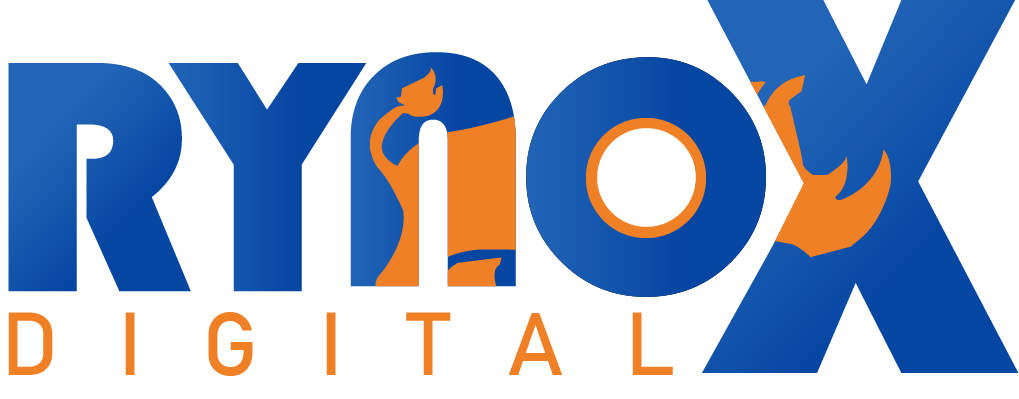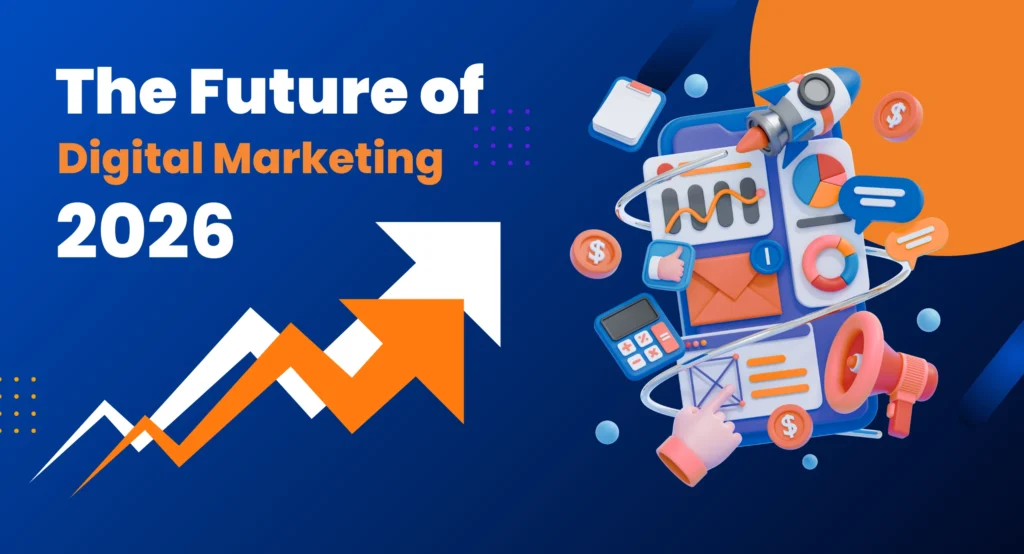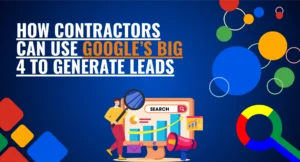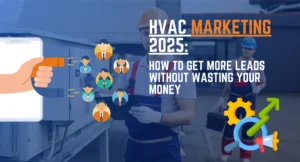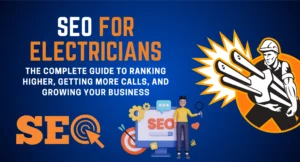Introduction
The Rapid Evolution of the Future of Digital Marketing
The future of digital marketing is unfolding faster than most businesses can keep up with. What worked five years ago — Google search ads, Facebook campaigns, and long-form blog content — now looks very different from the strategies that dominate today. Artificial intelligence is reshaping customer interactions, TikTok and Instagram Reels are commanding massive attention spans, Google is moving toward a cookieless future, and consumer demand for privacy has become as important as price or convenience.
Why Businesses Can’t Ignore the Future of Digital Marketing
This constant evolution means brands can no longer treat digital transformation as optional. Customers today expect faster websites, relevant ads, and seamless experiences across multiple platforms. Businesses that cling to outdated strategies risk becoming invisible. In the future of digital marketing, success won’t be determined by who spends the most — but by who adapts the fastest.
What 2026 Holds for Digital Marketing
By 2026, the future of digital marketing will look very different from today. Artificial intelligence won’t just be a “tool” — it will run entire campaigns, from targeting to ad copy optimization. Voice search and conversational AI will change how people find products, requiring marketers to shift from simple keyword strategies to natural language content. Short-form video will continue dominating attention, leaving little space for static content. Meanwhile, new privacy regulations will force brands to rethink how they collect and use customer data. And hyper-personalization will move from being an advanced tactic to becoming the default expectation.
The Challenge and the Opportunity
The future of digital marketing brings both challenges and opportunities. The challenge lies in keeping up with trends that evolve every quarter, while balancing resources and competition. But the opportunity is just as powerful: businesses that adopt these digital marketing trends early will capture market share, loyalty, and consumer trust before slower competitors catch up.
What This Blog Will Cover
In this article, we’ll explore five major trends shaping the future of digital marketing in 2026. You’ll discover why they matter, how they’ll impact your business, and what you can start doing now to prepare. Whether you’re a small business looking to grow, a mid-size brand scaling operations, or a global enterprise aiming to innovate, these insights will give you the edge in a rapidly changing digital landscape.
Trend #1 – AI & Automation Will Redefine the Future of Digital Marketing
Why AI Matters for the Future of Digital Marketing
The future of digital marketing is inseparable from artificial intelligence (AI). Over the past few years, AI has moved from being a “nice-to-have” experiment to a core part of how brands connect with their audiences. Today, AI powers everything from chatbots to predictive analytics, but by 2026, it will be at the very heart of digital marketing strategy. Businesses that embrace AI-driven tools will gain a massive competitive edge, while those that delay adoption risk falling behind.
How AI and Marketing Automation Are Changing Campaigns
AI is revolutionizing digital marketing by automating repetitive tasks that once consumed hours of manual effort. Audience segmentation, ad targeting, budget allocation, content recommendations, and even A/B testing can now be handled by smart systems that learn and adapt in real time. In the future of digital marketing, this means campaigns won’t just be data-driven — they’ll be self-optimizing.
For example, instead of a marketer manually tweaking ad copy, AI can instantly test hundreds of variations, learn which resonates best, and scale the winning version across platforms. Similarly, automation tools can monitor customer behavior and trigger personalized messages or offers at the exact moment they’re most likely to convert. This level of efficiency doesn’t just save time; it ensures marketing dollars are spent with maximum impact.
Real-World Applications of AI in Digital Marketing
- Predictive analytics – AI forecasts customer behavior, helping brands anticipate needs before the customer even expresses them.
- Chatbots & conversational AI – Deliver 24/7 customer support and sales guidance, creating seamless user experiences.
- Content generation – Tools powered by natural language processing can draft ad copy, blog posts, and email campaigns at scale.
- Dynamic personalization – AI tailors website layouts, product recommendations, and email sequences based on individual user data.
These applications are only scratching the surface. By 2026, we can expect AI tools to not only optimize but also strategize, making recommendations on where businesses should invest resources to achieve the best outcomes.
The Opportunities and Risks of AI in Digital Marketing
The opportunities for businesses are enormous: cost savings, better targeting, and higher ROI. However, the future of digital marketing with AI also brings challenges. Over-reliance on automation can make campaigns feel robotic if not balanced with human creativity. Data privacy regulations will also impact how AI collects and processes customer information. Businesses must use AI responsibly, ensuring transparency and building trust.
Action Steps for Businesses Today
To prepare for the future of digital marketing, brands should:
- Invest in AI-driven marketing platforms (e.g., Google Ads Smart Bidding, HubSpot, Salesforce Marketing Cloud).
- Train teams to work with AI, not against it, combining human insight with machine efficiency.
- Start building strong first-party data systems to feed into AI tools for smarter personalization.
- Test and experiment with AI tools in small campaigns before scaling.
Trend #2 – Voice & Conversational Search Will Transform the Future of Digital Marketing
The Rise of Voice Search in Digital Marketing
The way consumers search for information is changing rapidly, and the future of digital marketing will be shaped by voice-enabled technology. Smart speakers like Amazon Echo, Google Home, and Apple’s Siri have already become household staples. By 2026, voice assistants will no longer be limited to homes — they’ll be integrated into cars, wearables, and even smart appliances. This shift means businesses must optimize their digital marketing strategies for a world where typing is replaced with speaking.
Why Voice Search Is Different from Traditional Search
Voice search changes the nature of queries. Instead of typing short phrases like “best pizza NYC”, users are more likely to ask conversational questions such as “What’s the best pizza place near me open right now?”. This shift has massive implications for search engine optimization (SEO) in the future of digital marketing. Brands can no longer rely solely on keyword stuffing; they must optimize for natural language, question-based queries, and context.
In addition, most voice searches are performed on mobile devices or smart speakers, which means results are limited. Unlike a desktop search that shows 10 results per page, voice assistants typically deliver just one or two answers. Winning that top spot in voice search will be a competitive advantage for businesses in 2026.
Conversational AI and Customer Engagement
Voice search is just one piece of the puzzle. Conversational AI — chatbots, virtual assistants, and automated customer service tools — will also play a central role in the future of digital marketing. By 2026, conversational platforms won’t just answer basic FAQs; they’ll handle complex product recommendations, booking services, and even closing sales. This creates opportunities for businesses to engage customers in more natural, human-like interactions.
Opportunities for Brands in Voice Marketing
- Local SEO dominance – Many voice searches are location-based. Businesses that optimize for “near me” and hyperlocal terms will capture more traffic.
- Featured snippets optimization – Voice assistants often pull answers from “position zero” (featured snippets). Structured data and FAQ content increase the chances of being selected.
- Conversational content – Blogs, FAQs, and product descriptions should mimic natural speech patterns to align with how users ask questions.
- Voice commerce (v-commerce) – Shopping by voice will grow, from reordering household essentials to purchasing tickets and services directly through voice-enabled devices.
Action Steps to Prepare for the Future of Digital Marketing
To get ahead, businesses should:
- Optimize website content for conversational queries using long-tail keywords and FAQs.
- Claim and enhance their Google Business Profile to capture local voice searches.
- Use structured data (schema markup) to increase visibility in voice results.
- Integrate chatbots and conversational AI into websites and apps to improve customer experience.
- Test voice advertising opportunities as platforms like Amazon and Google expand v-commerce.
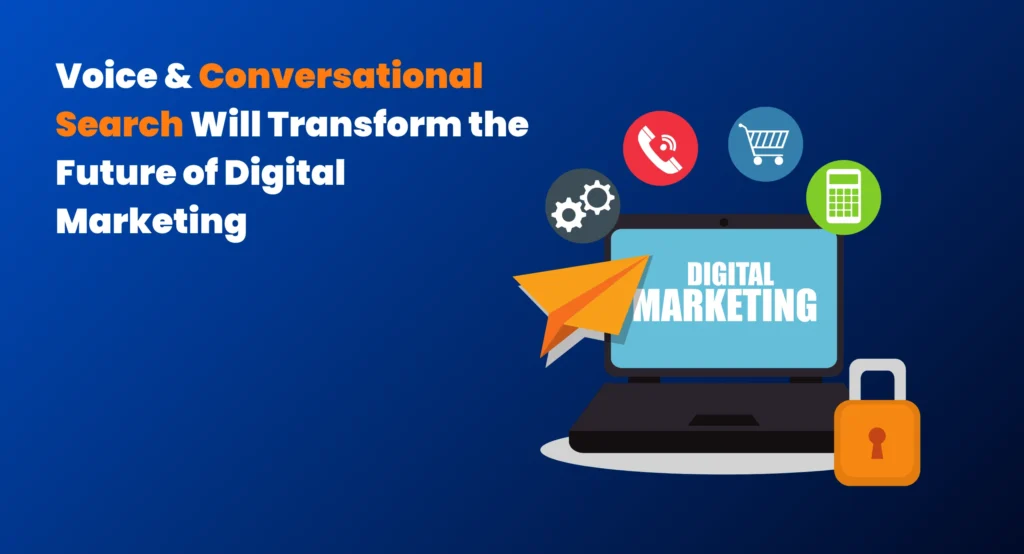
Trend #3 – Short-Form Video Will Dominate the Future of Digital Marketing
Why Short-Form Video Is Reshaping Digital Marketing
The future of digital marketing is video-first, and specifically short-form video. Platforms like TikTok, Instagram Reels, and YouTube Shorts have completely transformed how people consume content. Instead of scrolling through static posts or reading long captions, users now prefer fast, entertaining, and bite-sized videos. By 2026, short-form video will no longer be just an optional format — it will be the primary way brands capture attention online.
The Psychology Behind Short-Form Video Success
Short-form videos work because they align with shrinking attention spans and the demand for instant gratification. The average user decides within 3–7 seconds whether to keep watching or scroll away. In the future of digital marketing, this means brands need to hook their audience immediately with engaging visuals, strong storytelling, or a relatable message. Unlike traditional ads, short-form video doesn’t feel like marketing — it feels like entertainment. That emotional connection drives stronger brand recall and higher conversions.
Short-Form Video and Social Media Algorithms
Social media platforms are prioritizing short-form video because it keeps users engaged longer. TikTok’s “For You” page, Instagram’s algorithm, and YouTube’s recommendation engine all reward brands that consistently publish snackable video content. In 2026, algorithms will likely become even more sophisticated, rewarding not just views but also engagement signals like comments, shares, and watch time. For businesses, this means short-form video will be central to visibility and organic reach in digital marketing trends of the future.
How Brands Can Leverage Short-Form Video Marketing
- Behind-the-scenes storytelling – Humanize your brand by showing the process, culture, or team members behind the product.
- Educational micro-content – Quick tips, how-tos, and tutorials in under 30 seconds build authority while keeping attention.
- User-generated content (UGC) – Encourage customers to share their own videos using your product and feature them in campaigns.
- Shoppable videos – Platforms are increasingly adding “click-to-buy” features, allowing users to purchase directly from video ads.
- Trend participation – Leveraging viral sounds, memes, or challenges helps brands tap into cultural moments.
The Future of Video Commerce (V-Commerce)
By 2026, short-form video won’t just entertain; it will drive transactions. With integrated e-commerce tools, viewers will be able to buy products without leaving the platform. This fusion of entertainment and shopping — known as video commerce (v-commerce) — is expected to become one of the fastest-growing sectors in digital marketing. Brands that prepare now will be ahead of the curve.
Action Steps to Prepare for the Future of Digital Marketing
- Develop a consistent short-form video strategy across TikTok, Instagram, and YouTube.
- Focus on storytelling and authenticity rather than overly polished production.
- Test shoppable features early to get ahead of competitors.
- Repurpose long-form content (webinars, podcasts) into short, engaging clips.
- Monitor analytics to understand what type of content resonates and refine over time.
Trend #4 – Privacy-First Marketing & Cookieless Tracking in the Future of Digital Marketing
Why Privacy Is Shaping the Future of Digital Marketing
The future of digital marketing will be defined not only by new technologies but also by stricter privacy expectations. Over the past few years, we’ve seen global regulations like GDPR (Europe) and CCPA (California) reshape how businesses collect and use customer data. By 2026, data privacy will no longer be a compliance issue — it will be a brand trust issue. Customers will increasingly choose to buy from businesses that protect their data and communicate transparently.
The End of Third-Party Cookies
One of the biggest changes in the future of digital marketing is the end of third-party cookies. Google is already phasing them out, and by 2026, cookieless tracking will be the new normal. This means marketers will no longer be able to rely on cookie-based retargeting to follow customers across the internet. While this might sound like a setback, it’s actually a chance for brands to build stronger, first-party data strategies.
First-Party Data as the New Gold
With third-party tracking disappearing, businesses must shift their focus to first-party data — information collected directly from customers through websites, apps, and loyalty programs. This type of data is not only more reliable but also builds stronger relationships with consumers. For example:
- Email subscriptions give businesses a direct line to their audience.
- Loyalty programs encourage repeat purchases while gathering valuable behavioral data.
- Surveys and preference centers allow customers to control how they engage with brands.
In the future of digital marketing, the brands that excel will be those that create genuine value in exchange for customer information.
Balancing Personalization With Privacy
Consumers still expect personalization, but they don’t want to feel like they’re being spied on. The challenge for marketers in 2026 will be balancing personalization with privacy-first practices. This is where cookieless tracking, AI, and predictive analytics will play a role — helping businesses deliver relevant experiences without violating trust.
Opportunities in Privacy-First Marketing
- Transparent communication – Tell customers exactly what data you’re collecting and why.
- Consent-driven marketing – Make it easy for users to opt in (and out) of marketing communications.
- Contextual advertising – Target ads based on content relevance rather than user tracking.
- Trust as a differentiator – Brands that highlight their privacy-first approach will stand out in crowded markets.
Action Steps for Businesses Today
- Audit current data collection practices and ensure compliance with global privacy regulations.
- Invest in first-party data strategies such as email marketing, mobile apps, and loyalty programs.
- Experiment with cookieless tracking solutions and contextual advertising.
- Build transparent policies and highlight them in your digital marketing campaigns.
- Educate your team on how to balance personalization with respect for privacy.
Trend #5 – Personalization at Scale Will Define the Future of Digital Marketing
Why Personalization Is No Longer Optional
The future of digital marketing is personal. For years, personalization was seen as an advanced tactic — recommending products based on browsing history or sending emails with a customer’s first name. But by 2026, personalization will no longer be a luxury. It will be the standard that customers expect in every interaction with a brand. If businesses fail to deliver tailored experiences, consumers will quickly move on to competitors who do.
The Shift From Generic to Hyper-Personalized Marketing
Traditional marketing often relied on broad segments: “women ages 25–35” or “small business owners.” But the future of digital marketing demands hyper-personalization at the individual level. Instead of treating audiences as groups, businesses will use AI and big data to understand each customer’s unique needs, preferences, and behaviors. Imagine opening a brand’s app and seeing a homepage completely different from someone else’s, with recommendations, offers, and messages designed just for you. That is personalization at scale.
The Role of AI in Personalization
Artificial intelligence will be the driving force behind personalization in the future of digital marketing. AI algorithms can process vast amounts of data in real time — purchase history, browsing patterns, location, even voice search behavior — to deliver the right message at the right time. For example:
- Email marketing – AI can send personalized product recommendations based on previous purchases.
- E-commerce – Websites dynamically adjust layouts and promotions for each visitor.
- Advertising – AI-driven platforms deliver ads tailored not just to demographics but to individual intent signals.
- Content marketing – Blogs, videos, and product descriptions adapt to match user interests.
This level of personalization was once out of reach for smaller businesses, but in 2026, AI-driven tools will make it accessible and affordable for brands of all sizes.
Benefits of Personalization in Digital Marketing
- Higher engagement – Personalized content resonates more deeply, leading to longer time spent on websites and higher open rates in emails.
- Increased conversions – Customers are more likely to purchase when offers feel relevant to their needs.
- Improved loyalty – Personalization creates stronger emotional connections, encouraging repeat business.
- Better ROI – Marketing budgets are used more efficiently when campaigns target individuals rather than broad groups.
Challenges in Delivering Personalization at Scale
While the benefits are clear, personalization at scale comes with challenges. Collecting and analyzing massive amounts of customer data requires investment in technology and skilled teams. Privacy concerns also play a role — businesses must ensure personalization doesn’t cross the line into intrusiveness. In the future of digital marketing, the brands that succeed will be those that balance personalization with transparency, ensuring customers feel understood rather than surveilled.
Opportunities for Businesses
- Dynamic websites – Create adaptive site experiences that change based on user behavior.
- Personalized video marketing – Deliver videos tailored to individual preferences, combining the power of short-form video with personalization.
- AI-driven customer journeys – Map and automate end-to-end experiences that feel seamless and intuitive.
- Omnichannel personalization – Ensure consistency across email, social media, websites, and ads so customers receive a unified message.
Action Steps to Prepare for the Future of Digital Marketing
- Invest in AI-powered personalization platforms such as HubSpot, Salesforce, or Adobe Experience Cloud.
- Build robust first-party data systems to fuel personalized campaigns.
- Test personalization strategies in email and website content before scaling across channels.
- Train marketing teams to focus on customer experience, not just campaign execution.
- Communicate transparently with customers about how their data is being used to personalize experiences.
Conclusion – Preparing for the Future of Digital Marketing
The Road Ahead
The future of digital marketing is arriving faster than most businesses expect. By 2026, artificial intelligence will be running entire campaigns, voice search and conversational AI will change the way customers discover brands, short-form video will dominate social media, privacy-first strategies will reshape how businesses collect and use data, and personalization at scale will become the new baseline for customer expectations. These five trends aren’t distant predictions — they’re unfolding right now, and the businesses that adapt early will be the ones that thrive.
Why Adaptation Is Non-Negotiable
One of the biggest lessons we’ve learned from the evolution of digital marketing is that hesitation can be costly. Companies that resisted adopting mobile-friendly websites or social media marketing a decade ago lost massive opportunities to their competitors. The same principle applies to the future of digital marketing: waiting until 2026 to embrace these trends will be too late. Customers’ behaviors, expectations, and loyalties are shifting now — and brands must meet them where they are.
Turning Challenges Into Opportunities
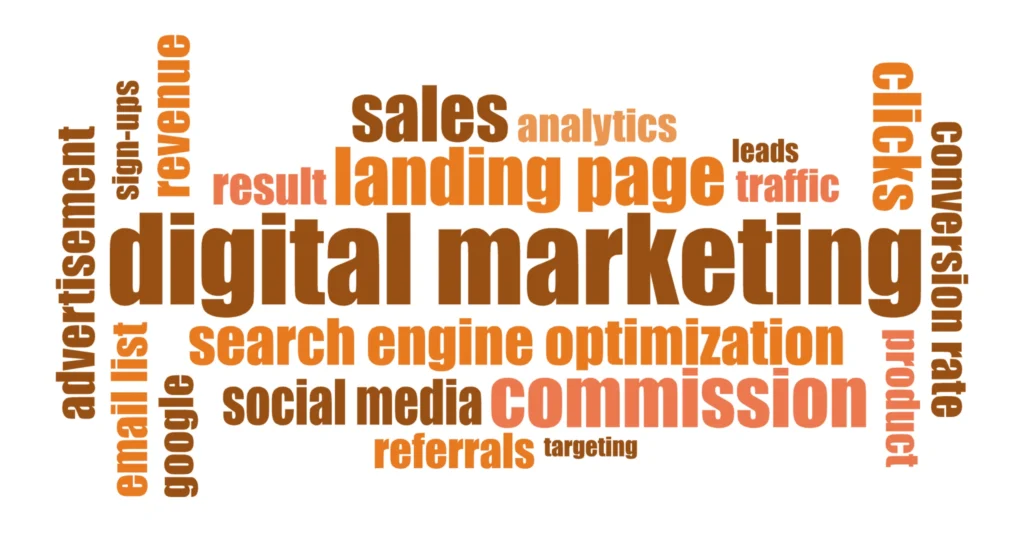
While each of these trends brings challenges — from mastering new technologies to managing privacy regulations — they also bring immense opportunities. AI and automation reduce wasted ad spend, voice search opens new paths for discovery, short-form video drives engagement, privacy-first marketing builds trust, and personalization deepens loyalty. Together, these forces will not only change how businesses market but also redefine what customers expect from every interaction.
Taking the First Step Today
The good news is that you don’t need to transform your digital marketing strategy overnight. Success in 2026 will come from businesses that start small, test new approaches, and scale what works. Whether it’s experimenting with AI-driven ad campaigns, optimizing content for voice search, producing engaging short-form videos, or building stronger first-party data systems, every step you take today prepares you for the future of digital marketing tomorrow.
Your Partner in the Future of Digital Marketing
At Rynox Digital, we specialize in helping businesses stay ahead of the curve. Our strategies are designed not just for today’s market but for tomorrow’s challenges. If you’re ready to prepare your brand for the future of digital marketing and capture opportunities before your competitors, let’s talk.
Ready to future-proof your business?
Contact Rynox Digital today at 832-252-1552, and let’s build your digital marketing strategy for 2026 and beyond.
